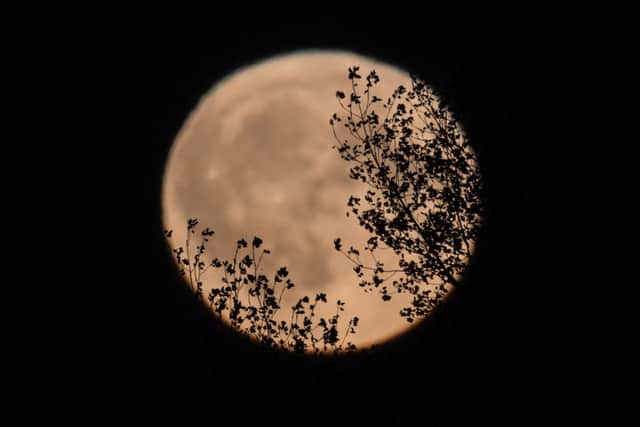Harvest Moon: what is the final supermoon of the year, where can it be seen and what makes it a supermoon
and live on Freeview channel 276
On 29 September, we will see the last supermoon of 2023.
Known as the Harvest Moon, it will appear subtly larger and brighter than average than the typical full moon.
So what is a supermoon, and how can you see the Harvest Moon? Here is what you need to know.


What is a supermoon?
Advertisement
Hide AdAdvertisement
Hide AdThe term Supermoon was coined in 1979, and is used to describe when the moon is at the closet point in its orbit around Earth.
Royal Museums Greenwich explains how a supermoon comes to be, saying: “The distance between the Moon and the Earth varies, because the Earth is not right at the centre of the Moon’s orbit and the Moon’s orbit is not a circle (it’s an ellipse). The moment when the Moon is closest to the Earth is called a lunar perigee."
They add: “When the Moon is furthest away it is known as a lunar apogee. If the lunar perigee occurs very close to a full moon, then we see a supermoon. If a lunar apogee occurs very close to a full moon then we see a micromoon.”
When will the Harvest Moon appear?
The Harvest Moon, the name traditionally given to the full moon nearest the date of the September Equinox.
Advertisement
Hide AdAdvertisement
Hide AdThe full moon of 29 September will happen exactly 32 hours and 52 minutes after lunar perigee - where the Moon is closest to Earth.
The perigee is on 27 September, and the moon's path brings it thousands of miles nearer than usual.
The moon becomes twice its size two days later, and will be 224,657 miles from Earth, according to retired NASA astrophysicist Fred Espanak.
The moon will rise at 7pm in the east, and it will be in the skies until 8.19am the next day, September 30, and will still appear full when it reappears that night.
Advertisement
Hide AdAdvertisement
Hide AdThe Moon will not appear alone, and will be accompanied by a host of planets such as Jupiter, Saturn and Mercury will be close by. Saturn will be on the Moon's left, Jupiter to its right but Mercury will be hard to spot.
It is worth noting with Storm Agnes, stargazers may not be able to see the planets.
Comment Guidelines
National World encourages reader discussion on our stories. User feedback, insights and back-and-forth exchanges add a rich layer of context to reporting. Please review our Community Guidelines before commenting.
